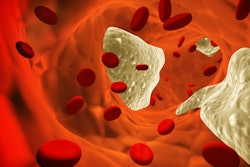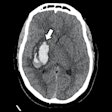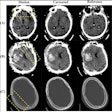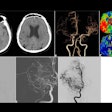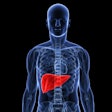Higher long-term exposure to air pollution is associated with higher coronary artery calcium scores (CACS) across most populations, according to research presented July 19 at the Society of Cardiovascular Computed Tomography (SCCT) meeting.
There are a number of factors that could contribute to heart disease caused by pollution, noted presenter Felipe Castillo, MD, of Toronto General Hospital in Canada. Castillo's and colleagues' work received one of the SCCT's Best Abstract awards.
"Proposed mechanisms [for cardiovascular disease caused by pollution] include systemic inflammation, oxidative stress, and endothelial dysfunction potentially leading to coronary plaque formation, calcification, and stenosis," he said.
Exposure to fine particulate matter (PM2.5) air pollution has been linked to heart disease, yet the underlying pathophysiological mechanisms aren't clear, the group noted. Castillo's team evaluated the relationship between long-term PM2.5 exposure and the extent of coronary artery calcium quantified by cardiac CT.
The group conducted a study that included 11,140 patients at medium risk of coronary artery disease who underwent outpatient cardiac CT between 2012 and 2023 and whose CACS were evaluated. The investigators assessed the mean daily PM2.5 concentration in the decade prior to the study participants' CT exams based on measurements from the nearest monitoring station to each individual's home. The team adjusted this data for age, sex, distance to monitoring station, CT unit, hospital site, year, and socioeconomic status.
The team reported that median 10-year exposure to PM2.5 was 7.5 µg/m3 and median CACS was 3. Overall, each 1 µg/m3 increase in 10-year PM2.5 exposure was associated with 12.4% higher CACS in unadjusted analysis and 8.9% higher CACS in adjusted analysis.
On a second, adjusted analysis, each 1 µg/m3 increase in ten-year PM2.5 exposure was associated with the following:
- 11.3% higher CACS in women
- 6% higher CACS in men
- 13.5% higher CACS in asymptomatic individuals
- 19.4% higher CACS in people 50 years or older
Castillo listed a few limitations to the study, noting that CACS does not quantify noncalcified plaque and that outdoor monitoring data "doesn't account for indoor exposure or variability in time spent outside."
But overall, he concluded that "atherosclerosis may be one of the underlying pathophysiological mechanisms by which air pollution leads to adverse cardiovascular outcomes and could explain some of the variability in cardiovascular disease risk not explained by traditional risk factors."








